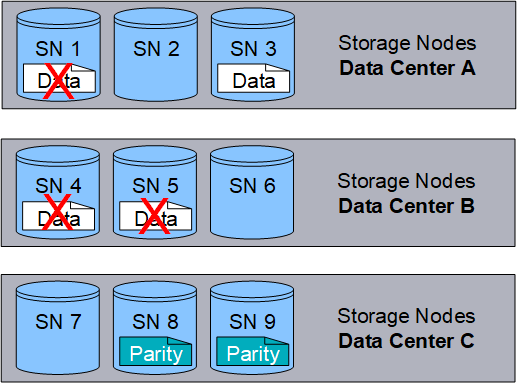What is erasure coding?
 Suggest changes
Suggest changes


Erasure coding is one of two methods StorageGRID uses to store object data (replication is the other method). When objects match an ILM rule that uses erasure coding, those objects are sliced into data fragments, additional parity fragments are computed, and each fragment is stored on a different Storage Node.
When an object is accessed, it is reassembled using the stored fragments. If a data or a parity fragment becomes corrupt or lost, the erasure-coding algorithm can recreate that fragment using a subset of the remaining data and parity fragments.
As you create ILM rules, StorageGRID creates erasure-coding profiles that support those rules. You can view a list of erasure-coding profiles, rename an erasure-coding profile, or deactivate an erasure-coding profile if it is not currently used in any ILM rules.
The following example illustrates the use of an erasure-coding algorithm on an object's data. In this example, the ILM rule uses a 4+2 erasure-coding scheme. Each object is sliced into four equal data fragments, and two parity fragments are computed from the object data. Each of the six fragments is stored on a different node across three data center sites to provide data protection for node failures or site loss.

The 4+2 erasure-coding scheme can be configured in various ways. For example, you can configure a single-site storage pool that contains six Storage Nodes. For site-loss protection, you can use a storage pool containing three sites with three Storage Nodes at each site. An object can be retrieved as long as any four of the six fragments (data or parity) remain available. Up to two fragments can be lost without loss of the object data. If an entire site is lost, the object can still be retrieved or repaired, as long as all of the other fragments remain accessible.

If more than two Storage Nodes are lost, the object is not retrievable.



